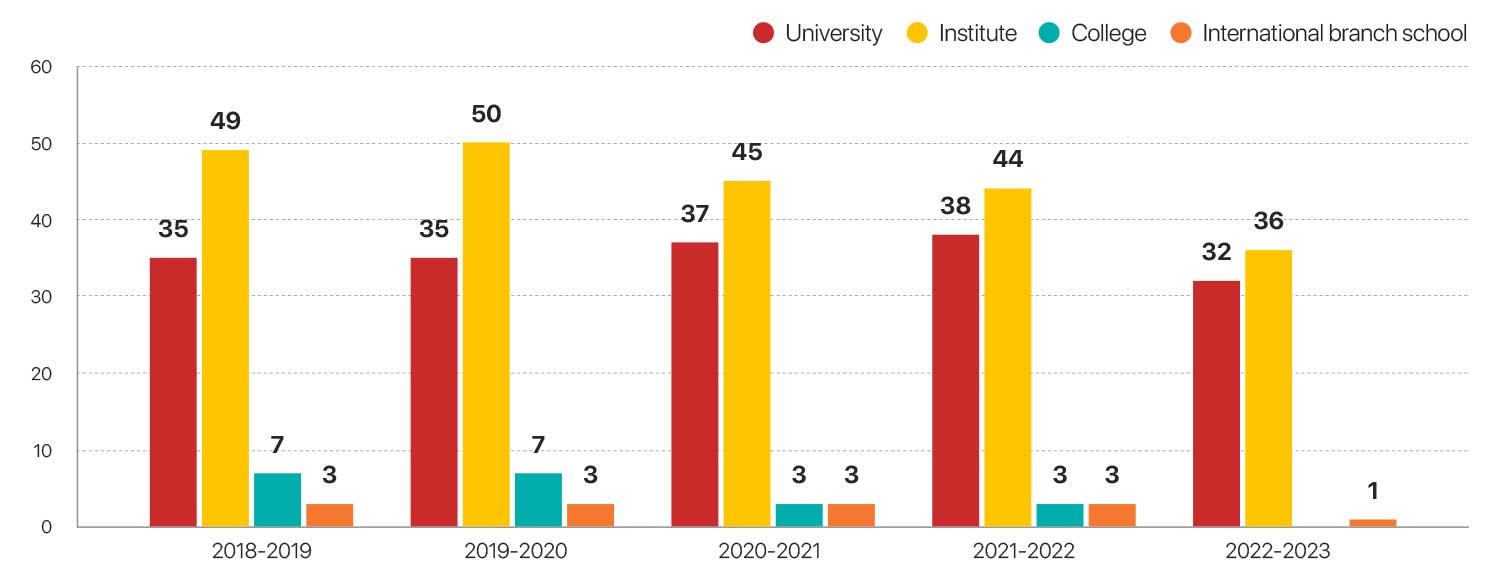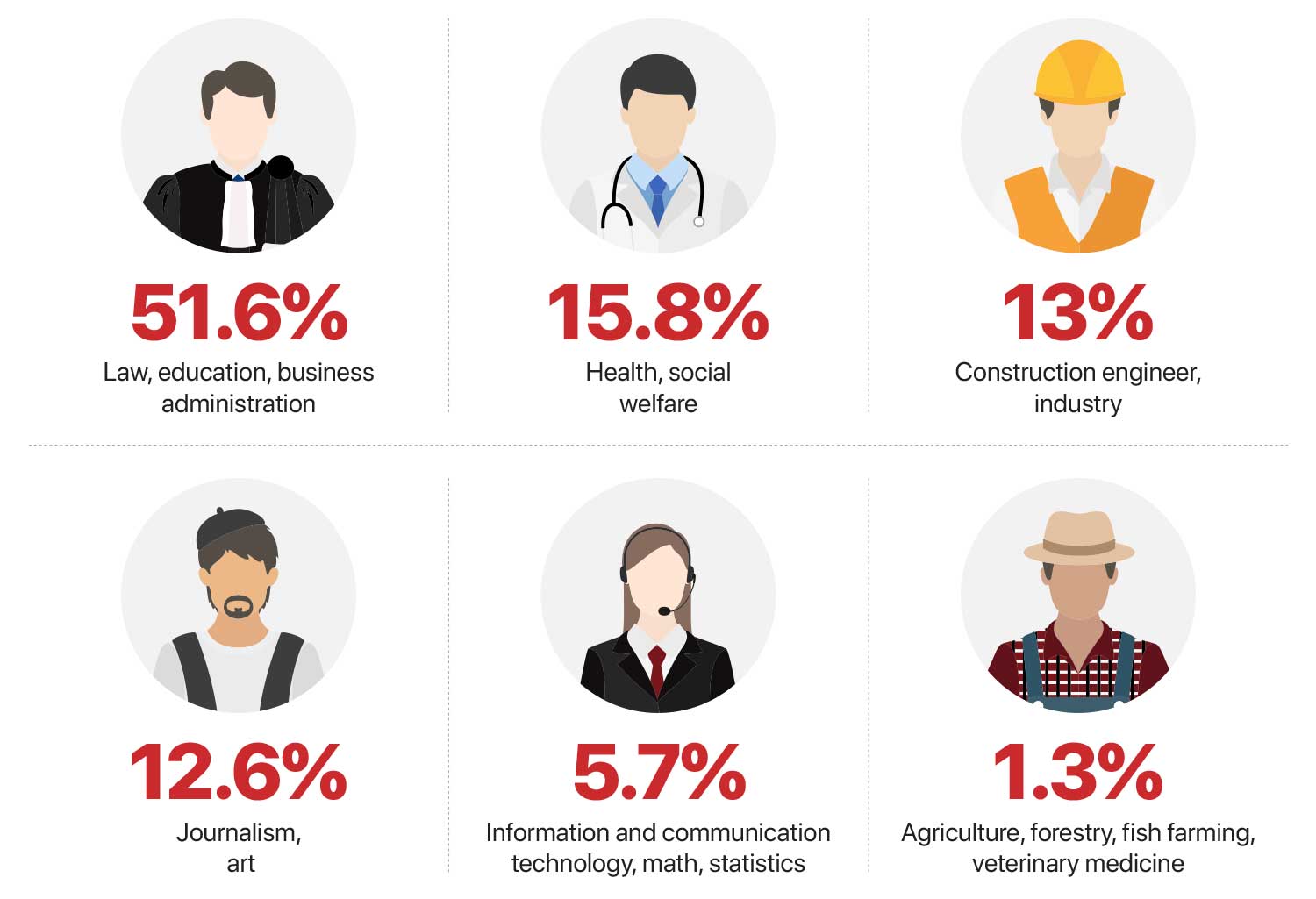Last year, the National Audit Office of Mongolia (NAA) conducted a performance audit on the topic “The Current Status and Results of Higher Education in Mongolia.” In the 2022-2023 academic year, 69 universities and colleges are operating nationwide in Mongolia.
Number of higher education facilities, categories
Source: National Audit Office of Mongolia
The audit report pointed out that the independence of the governance and management system of higher education institutions was not ensured. Specifically, the central state administrative organization in charge of education has the full right to appoint the director of state-owned universities, but the director of some state-owned universities has been appointed without selection.
In addition, there are insufficient activities to develop the skills and professional development of university teachers. Because some provisions have not been implemented in the higher education institution classification regulations, the quality of higher education is weak in international competitiveness, and there is a shortage of teachers with doctoral degrees.
In 2020-2021, 31,200 students graduated from universities. Of those, 51.6% acquired degrees in legal, educational, and business management professions. However, only 1.3% acquired degrees in agriculture, forestry, fisheries, and veterinary medicine.
Professional fields acquired by university graduates, 2020-2021
Source: National Audit Office of Mongolia
In the 1940s, the Mongolian government established the first university, the National University of Mongolia, which was modeled after Soviet universities. Following the democratic revolution in Mongolia in 1990, the higher education system was reformed to become more market-oriented and to promote international cooperation and exchanges. The number of universities and colleges increased rapidly, from just a few in the early 1990s to 69 as of the 2022-2023 academic year.
However, the higher education system in Mongolia faces a number of challenges. One of the main challenges is ensuring the quality of education. Another challenge is the lack of alignment between higher education and the needs of the labor market. Despite the high unemployment rate in Mongolia, many employers report difficulty in finding workers with the skills and qualifications they need. This suggests a mismatch between the skills being taught in universities and the skills that are in demand in the labor market.
To address these challenges, the Mongolian government has identified a number of priorities for the higher education system. These include improving the quality of education, increasing access to higher education, and promoting the alignment between higher education and the needs of the labor market. The government has also launched initiatives to encourage more students to pursue studies in science, technology, engineering, and mathematics (STEM) fields, which are seen as critical for the country’s economic development.

